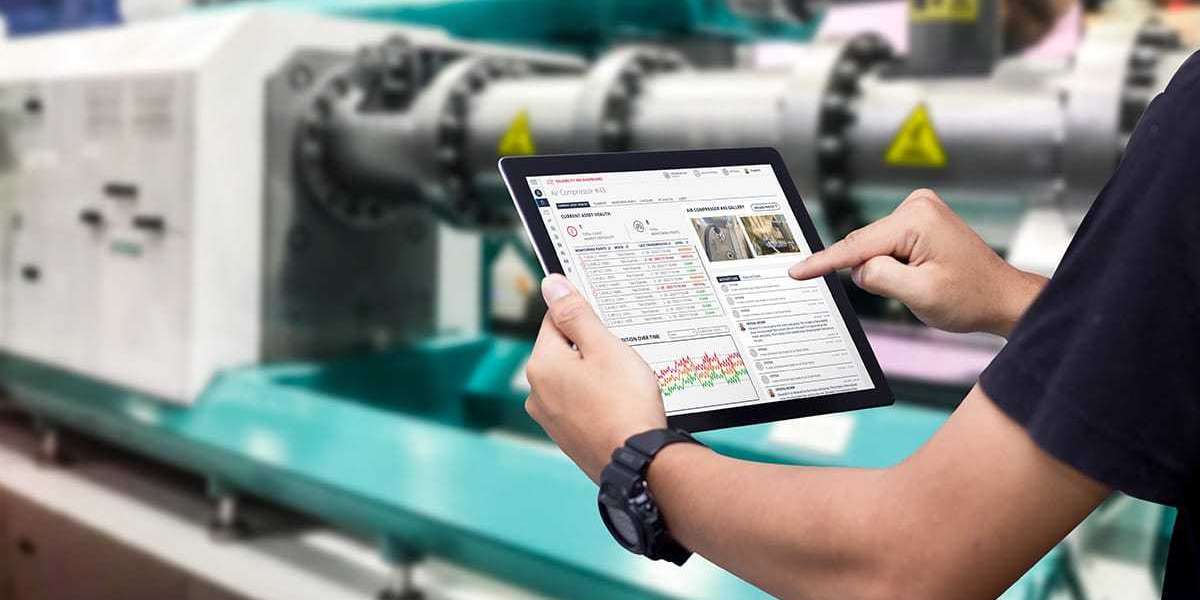1. Understanding Condition Monitoring
Condition monitoring is a process that involves the continuous or periodic assessment of the performance and condition of machinery, equipment, or systems. It utilizes various techniques and technologies to detect early signs of wear, deterioration, or malfunction, enabling proactive maintenance interventions before a failure occurs. This approach is a cornerstone of predictive maintenance, where the goal is to prevent unexpected breakdowns and extend the life of assets.
2. How Condition Monitoring Works
Condition monitoring typically involves the use of sensors and diagnostic tools to collect data on key parameters such as temperature, vibration, pressure, and lubrication levels. These data points are then analyzed, often in real-time, to identify patterns or deviations that may indicate an impending issue. Advanced condition monitoring systems may also use machine learning algorithms to predict failures and suggest maintenance actions.
3. Types of Condition Monitoring Techniques
There are several condition monitoring techniques, each suited for different types of equipment and operating environments. Some of the most common methods include:
- Vibration Analysis: Measures the vibrations of machinery to detect imbalances, misalignments, or bearing faults.
- Thermography: Uses infrared cameras to detect abnormal heat patterns, which can indicate electrical or mechanical issues.
- Ultrasound Testing: Detects high-frequency sounds that are often associated with equipment wear or leaks.
- Oil Analysis: Examines the condition of lubricants to identify contamination or degradation.
- Acoustic Emissions: Monitors the sounds emitted by equipment to detect cracks, leaks, or other structural issues.
4. Benefits of Condition Monitoring
The benefits of implementing condition monitoring are vast and can significantly impact an organization’s bottom line. Some of the key advantages include:
- Reduced Downtime: By identifying potential issues before they lead to failure, condition monitoring helps minimize unplanned downtime, ensuring that operations continue smoothly.
- Cost Savings: Proactive maintenance is generally less expensive than reactive repairs. Condition monitoring helps avoid costly emergency repairs and reduces the need for spare parts inventory.
- Extended Equipment Life: Regular monitoring and maintenance help extend the life of machinery, delaying the need for expensive replacements.
- Improved Safety: Detecting and addressing issues before they escalate improves the safety of both personnel and equipment.
- Optimized Maintenance Schedules: Rather than adhering to rigid maintenance schedules, condition monitoring allows for maintenance to be performed only when necessary, optimizing resource allocation.
5. Condition Monitoring in Different Industries
Condition monitoring is widely used across various industries, each with its unique set of requirements and challenges. Below are some examples of how different sectors benefit from condition monitoring:
- Manufacturing: In manufacturing, condition monitoring ensures that production lines run efficiently and without interruption. By monitoring critical machinery, manufacturers can avoid costly downtimes that could impact their production schedules.
- Energy: In the energy sector, especially in power plants, condition monitoring is used to ensure the reliability of turbines, generators, and other critical equipment. This helps in preventing outages and maintaining a consistent energy supply.
- Aerospace: Aircraft rely heavily on condition monitoring to ensure all components function correctly, ensuring passenger safety and reducing maintenance costs.
- Transportation: Railways and shipping companies use condition monitoring to keep trains and ships operational by detecting issues before they become critical, preventing accidents, and ensuring schedules are met.
- Oil and Gas: In this industry, condition monitoring is crucial for preventing leaks, equipment failures, and other issues that could lead to environmental disasters or significant financial losses.
6. The Role of Technology in Condition Monitoring
Advancements in technology have played a significant role in the evolution of condition monitoring. Today, many systems are equipped with Internet of Things (IoT) sensors that provide real-time data, which can be accessed remotely. Additionally, cloud computing allows for the storage and analysis of large datasets, enabling more accurate predictions and better decision-making. The integration of artificial intelligence (AI) and machine learning (ML) into condition monitoring systems is also becoming increasingly common, allowing for more sophisticated data analysis and predictive capabilities.
7. Condition Monitoring vs. Predictive Maintenance
While the terms condition monitoring and predictive maintenance are often used interchangeably, they are not the same. Condition monitoring is a tool or technique used within the broader predictive maintenance strategy. Predictive maintenance is the overarching approach that uses condition monitoring data to predict when maintenance should be performed. In essence, condition monitoring provides the data, while predictive maintenance determines the actions based on that data.
8. Challenges in Implementing Condition Monitoring
Despite its benefits, implementing condition monitoring can present several challenges. These may include:
- High Initial Costs: The upfront investment in condition monitoring systems and technologies can be significant, especially for small to medium-sized businesses.
- Data Management: Collecting and analyzing large volumes of data requires robust data management systems and skilled personnel, which can be a barrier for some organizations.
- Integration with Existing Systems: Integrating new condition monitoring systems with existing infrastructure can be complex and time-consuming.
- Skill Gaps: There may be a lack of in-house expertise to manage and interpret the data generated by condition monitoring systems, necessitating additional training or the hiring of specialists.
9. Best Practices for Effective Condition Monitoring
To maximize the benefits of condition monitoring, organizations should consider the following best practices:
- Start Small: Begin by implementing condition monitoring on a small scale, focusing on the most critical assets. This allows for a more manageable rollout and helps demonstrate the approach's value before scaling up.
- Invest in Training: Ensure personnel are adequately trained to use and interpret the data generated by condition monitoring systems.
- Regularly Review and Update Systems: Technology and best practices in condition monitoring are continually evolving. Regularly review and update your systems to take advantage of new advancements.
- Integrate with Maintenance Management Systems: Integrate condition monitoring data with your computerized maintenance management system (CMMS) to streamline maintenance planning and execution.
- Collaborate with Experts: Work with condition monitoring experts to design and implement a system tailored to your organization’s specific needs.
10. The Future of Condition Monitoring
The future of condition monitoring is bright, with ongoing advancements in technology poised to make it even more effective and accessible. As IoT devices become more widespread and affordable, we can expect to see more organizations adopting condition-monitoring practices. Additionally, the integration of AI and ML will continue to enhance the predictive capabilities of these systems, leading to even greater reliability and efficiency.
Conclusion
Condition monitoring is a vital tool for any organization that relies on machinery and equipment. By detecting potential issues before they lead to failure, it helps to reduce downtime, save costs, and extend the life of assets. While there are implementation challenges, the benefits far outweigh the initial hurdles. As technology continues to advance, condition monitoring will become an even more integral part of maintenance strategies, helping businesses to operate more efficiently and safely. Embracing condition monitoring today sets the stage for a more reliable and cost-effective future.
Source: https://wingsmypost.com/what-is-condition-monitoring-and-why-its-important/


